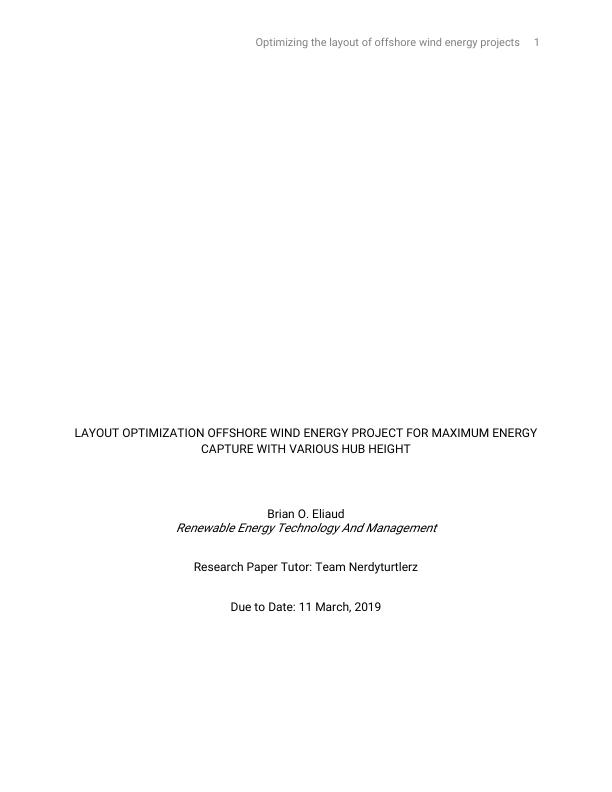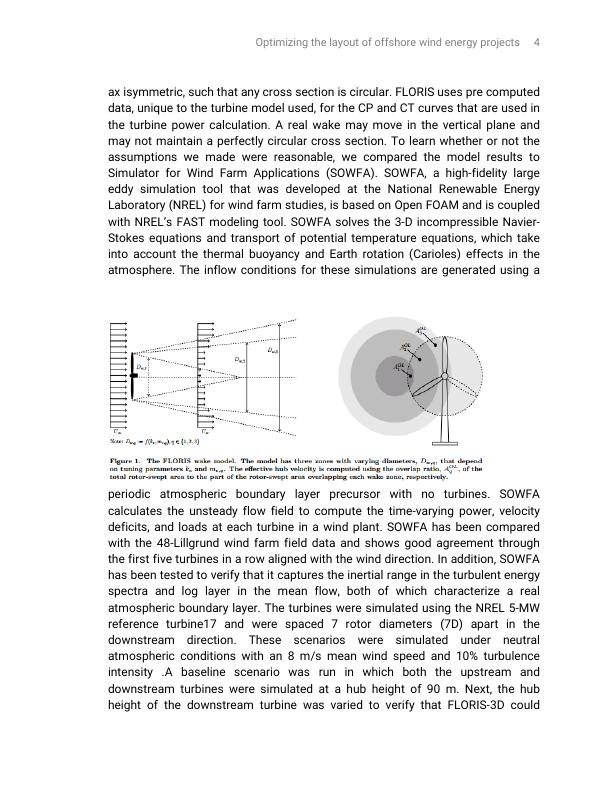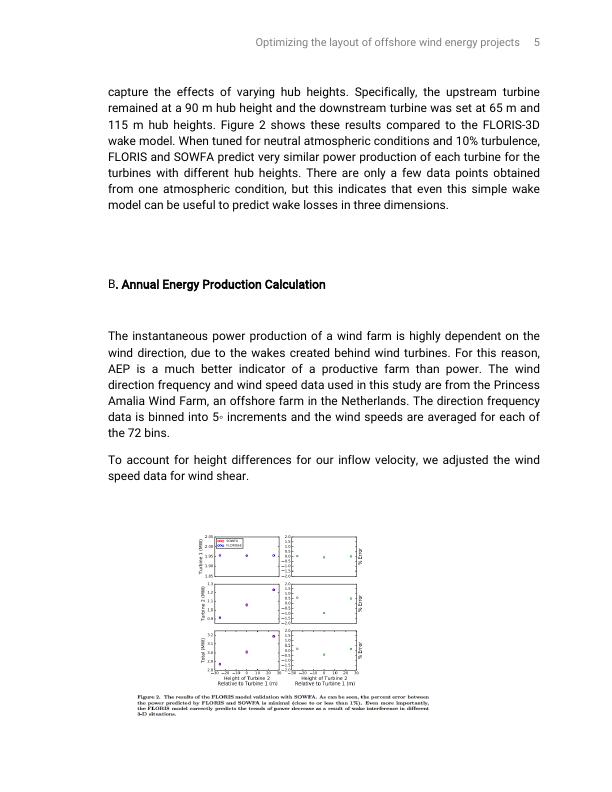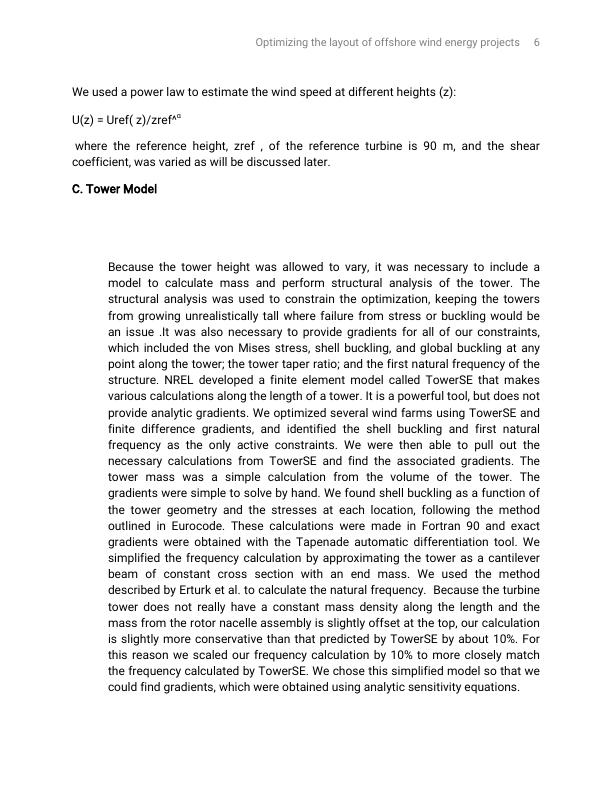Layout Optimization of Offshore Wind Energy Project for Maximum Energy Capture with Variable Hub Height
Paper 1: Model for Decommissioning and disposal of offshore wind energy projects in the UK and Europe. Paper 2: Layout optimisation of offshore wind energy project for maximum energy capture with various hub height.
24 Pages10340 Words481 Views
Added on 2023-04-25
About This Document
This research paper discusses the optimization of the layout of offshore wind energy projects for maximum energy capture with variable hub height. The study uses a gradient-based optimization method to optimize wind farms with different hub heights. The paper includes a modified version of the FLORIS wake model that accommodates three-dimensional wakes integrated with a power structural model. The results indicate that optimizing the layout and height of wind turbines can reduce the cost of energy by up to 5-9%. The paper is a research paper on renewable energy technology and management.
Layout Optimization of Offshore Wind Energy Project for Maximum Energy Capture with Variable Hub Height
Paper 1: Model for Decommissioning and disposal of offshore wind energy projects in the UK and Europe. Paper 2: Layout optimisation of offshore wind energy project for maximum energy capture with various hub height.
Added on 2023-04-25
ShareRelated Documents
End of preview
Want to access all the pages? Upload your documents or become a member.
Jollibee Foods Corporation: A Strategic Management Assessment
|9
|2475
|367
MGT 493 - Seminar in Entrepreneurship
|9
|2671
|63






